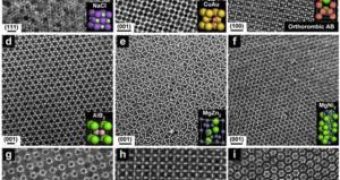Researchers from Columbia University and IBM have designed a new nano-technology that allows the creation of an entire new family of crystals. The main problem faced by nano-engineers is making the crystal self-assemble the way they want it.
Until recently, their best strategy was to let the nano-particles self-assemble in any way and then to select the desired structure. However, the goal is to make the structures assemble in a specific way. Various strategies have been created so far, the most notable ones being the DNA-based technology and the top-down strategy using statistical mechanics in a novel way.
The researchers from Columbia and IBM were inspired by the way crystals usually form in nature, and successfully recreated the same process for artificial nano-crystals. In nature, a crystal is formed gradually, by the addition of more and more units.
However, the challenge is to create a mono-crystal, i.e. a single monolithic entity, and not a mix of many small crystals. Such mono-crystals have been created for a long time, especially for their optical properties, by a very slow and tedious process. (It may take a few days to create a mono-crystal measuring a few centimeters.) The Columbia and IBM researchers managed to create such large arrays having nano-crystals as their basic units.
Because the nanocrystals can be chosen for their precise magnetic and electronic properties, says the group's spokesperson, Stephen O'Brien of Columbia, these new structures could have broad application for magnetic storage and nanoscale electronics. "You can think of nanocrystals as building blocks like the toy Lego," says O'Brien, "in which a larger structure can be assembled by locking in the pieces according to their shape and the way they prefer to join to each other. Except all of this is on an incredibly small length scale -- billionths of a meter."
The group described 10 of the new structures in the Jan. 5, 2006, issue of the journal Nature. You can view photographs of 12 such resulting structures here.
Photo Credit: Elena Shevchenko

 14 DAY TRIAL //
14 DAY TRIAL //